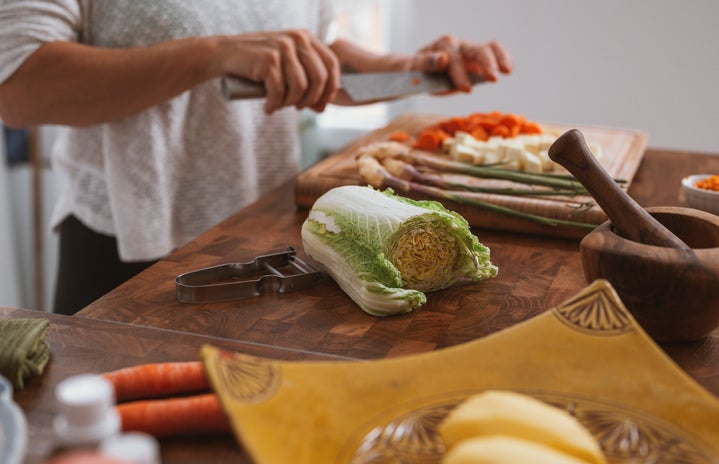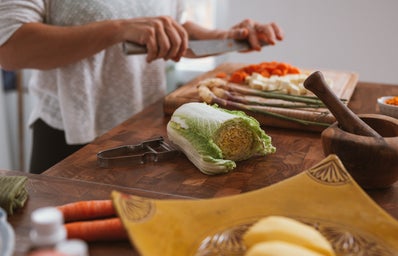Tackling food waste as a student can be pretty overwhelming. When I first started learning about the issue I was sad and alarmed, but I didn’t know where to start. Choosing to address food waste allows us to look deeper into our own lives and see countless chances to live out our values and make a difference. While I know that these tips will not solve the systemic issue of food waste, if everyone shopped, cooked and consumed just a little bit more consciously, it would surely have a cultural impact. These three tips are great ways to cut down on food waste, and a chance to give your wallet a break instead of springing for take-out or random bits at the grocery store.
- Shop Smart
-
Every mission needs a game plan, and making a grocery list is the perfect place to start. Listing what you need for all your recipes will help you stay on track and not get distracted by store offers. When you are distracted in the grocery store, you can buy random stuff that you don’t want or won’t actually use – contributing to waste. Also, when making a list let’s keep it real. Make a grocery list that suits your actual needs and is informed by your lifestyle. If you find yourself tossing out a bag of greens every week because you feel like you should buy greens, reevaluate your purchases and systems. If you can never cook all of the meat before it goes bad in your fridge, maybe you should buy less meat. Be realistic, what will you eat? How much of it do you need? This is also a great time to think about buying plastic-free if possible. After buying only the amount of food that you will realistically eat, there are two more ways to reduce waste: cooking and consuming.
- Save Scraps for Stock
-
While cooking, put aside your carrot peels, onion skins, scallion bits and pepper cores and store them in a freezer safe container in the freezer. Over time, the container will fill up instead of your garbage bin, and you can use these scraps to make homemade vegetable stock. I like to add a bit of olive oil to a pan and dump in the scraps to let them melt/soften over the heat for around 5 minutes. After that, I add as much water as necessary to cover the scraps,depending on how many scraps I have. Then, I let it simmer for at least an hour with a few bay leaves – salting and peppering to taste. Just strain, and enjoy!
- Eat Your Leftovers
-
We have all been there, prepping some food and then choosing not to eat it in favor of a quick takeaway, leaving it in a Tupperware until it turns green and we are forced to throw it out. It can be annoying to eat the same thing you had for dinner for lunch, but it is the best way to make sure you are finishing up your food. To help this, try and think of how you can reinvent the leftovers to suit your craving. Want tacos but know you should finish those sad looking roast veggies? Put those leftovers over black beans with salsa, cilantro and onion – yum! This is great for your wallet too, because you are actively choosing to consume all your groceries instead of buying and tossing them.


